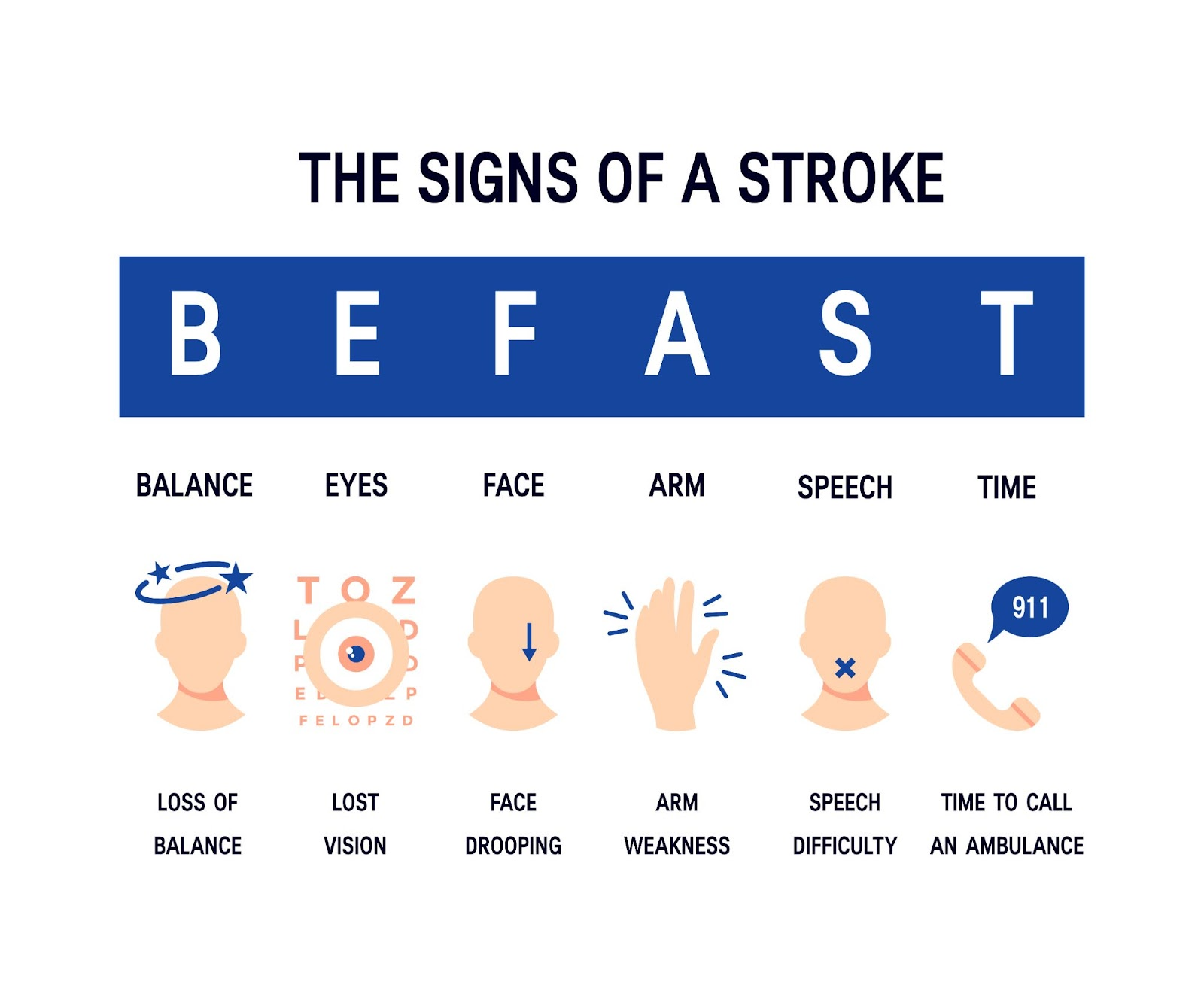American Stroke Month: Warning Signs and Facts
- Posted On:

May is American Stroke Awareness Month. At Campbell County Health, we know that education is a vital step in preventing and knowing how to identify when a stroke is happening. Using sources from the CDC and the American Heart Association, we’ve compiled some stroke statistics and the warning signs of a stroke.
Stroke statistics
In 2020, 1 in 6 deaths from cardiovascular disease was due to stroke.
Every 40 seconds, someone in the United States has a stroke. Every 3.5 minutes, someone dies of a stroke.
Every year, more than 795,000 people in the United States have a stroke. About 610,000 of these are first or new strokes.
About 185,000 strokes—nearly 1 in 4—are in people who have had a previous stroke.
About 87% of all strokes are ischemic strokes, in which blood flow to the brain is blocked.
Stroke-related costs in the United States came to nearly $53 billion between 2017 and 2018. This total includes the cost of healthcare services, medicines to treat stroke, and missed days of work.
Stroke is a leading cause of serious long-term disability. Stroke reduces mobility in more than half of stroke survivors age 65 and older.
Stroke Statistics by race and Ethnicity
Stroke is a leading cause of death for Americans, but the risk of having a stroke varies with race and ethnicity.
The risk of having a first stroke is nearly twice as high for black Americans as for white Americans, and black Americans have the highest rate of death due to stroke.
Though stroke death rates have declined for decades among all races/ethnicities, Hispanic Americans have seen an increase in death rates since 2013.
Stroke risk varies by age
Stroke risk increases with age, but strokes can—and do—occur at any age.
In 2014, 38% of people hospitalized for stroke were less than 65 years old.
Early action is important for stroke
Know the warning signs and symptoms of stroke so that you can act fast if you or someone you know might be having a stroke. The chances of survival are greater when emergency treatment begins quickly.
In one survey, most respondents—93%—recognized sudden numbness on one side as a symptom of stroke. Only 38% were aware of all major symptoms and knew to call 9-1-1 when someone was having a stroke.
Patients who arrive at the emergency room within 3 hours of their first symptoms often have less disability 3 months after a stroke than those who received delayed care.
Americans at risk for stroke
High blood pressure, high cholesterol, smoking, obesity, and diabetes are leading causes of strokes. One in 3 U.S. adults has at least one of these conditions or habits.

Use the letters in F.A.S.T. to Spot a Stroke
F = Face Drooping – Does one side of the face droop or is it numb? Ask the person to smile. Is the person's smile uneven?
A = Arm Weakness – Is one arm weak or numb? Ask the person to raise both arms. Does one arm drift downward?
S = Speech Difficulty – Is speech slurred?
T = Time to call 911
Other Stroke Symptoms
Watch for Sudden:
NUMBNESS or weakness of face, arm, or leg, especially on one side of the body
CONFUSION, trouble speaking or understanding speech
TROUBLE SEEING in one or both eyes
TROUBLE WALKING, dizziness, loss of balance or coordination
SEVERE HEADACHE with no known cause
If you or someone you know has experienced a stroke, talk to your healthcare provider about how Campbell County Medical Group Neurology can help in your recovery. For more information, visit our website or call 307.688.6000.

